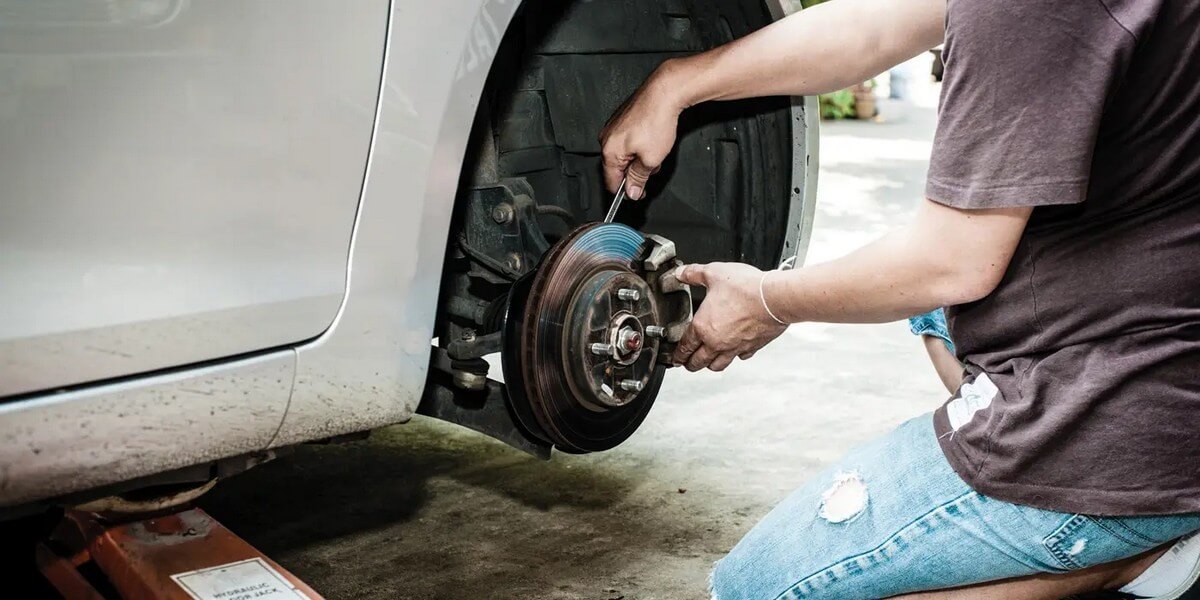
Car problems can pop up at the most inconvenient times, but knowing what to look for can make all the difference. In this guide, we'll cover five common car issues, varying from engine overheating to squeaking brakes. For each problem, we'll explain the causes and symptoms, and provide step-by-step instructions on how to fix them.
Whether you're a DIY enthusiast or just someone who wants to understand their car better, this guide will give you the knowledge you need to tackle these problems head-on. So, grab your tools, prepare your car manuals, and let's get started on keeping your car in top shape!
Engine Overheating
Engine overheating occurs when your car's engine temperature rises above the normal operating range. This can happen for various reasons, but it generally means that the cooling system is not effectively managing the engine's heat. Overheating can cause significant damage to your engine, so it's essential to address the issue as soon as possible.
Causes
Here are some common causes of engine overheating:
-
Low Coolant Levels: Coolant (or antifreeze) helps regulate your engine's temperature. If the coolant level is low, your engine can overheat.
-
Faulty Radiator: The radiator helps cool the engine by dispersing heat. A faulty or clogged radiator can prevent proper cooling.
-
Thermostat Issues: The thermostat regulates the flow of coolant. If stuck closed, it can prevent coolant from circulating, causing the engine to overheat.
-
Water Pump Failure: The water pump circulates coolant through the engine. If it fails, coolant can't flow properly, leading to overheating.
Symptoms
Recognizing the symptoms of engine overheating early can prevent serious damage. Here are some signs to look out for:
-
Temperature Gauge Rising: Keep an eye on your car’s temperature gauge. If it rises into the red zone, your engine is overheating.
-
Steam from Under the Hood: Steam or smoke coming from under the hood is a clear sign of overheating.
-
Strange Odors: Overheating can cause a sweet smell from leaking coolant or a burnt odor from overheating components.
-
Coolant Leaks: Puddles of coolant under your car can indicate a leak, leading to low coolant levels and overheating.
How to Fix an Overheating Engine
If your engine is overheating, follow these steps to diagnose and fix the problem:
-
Check Coolant Levels and Refill if Necessary
-
Wait for the engine to cool down before opening the radiator cap. Hot coolant can cause severe burns.
-
Once the engine is cool, open the radiator cap and check the coolant level. If it’s low, refill it with the correct type of coolant.
-
-
Inspect the Radiator for Leaks or Blockages
-
Check the radiator for any visible signs of leaks. Look for puddles or stains under the car.
-
Inspect the radiator fins for blockages from dirt, debris, or bugs. Clean the radiator using a soft brush or compressed air.
-
-
Test the Thermostat
-
The thermostat is usually located near the top of the engine, where the upper radiator hose connects.
-
Remove the thermostat and test it by placing it in a pot of boiling water. If it doesn’t open, it’s faulty and needs replacing.
-
-
Examine the Water Pump
-
The water pump is typically located on the front of the engine and is driven by the serpentine belt.
-
Look for signs of leaks around the water pump. A failing pump might also make a whining noise.
-
If the pump is faulty, replace it. This can be a complex task, so refer to your repair manual for detailed instructions.
-
-
Check for Coolant Leaks
-
Look for leaks in the radiator hoses, heater hoses, and around the engine. Coolant leaks can often be found by looking for dried coolant residue.
-
If you find any leaks, replace the damaged hoses or seals.
-
Preventing engine overheating is crucial to maintaining your car's health. Regularly check your coolant levels, inspect the radiator and water pump, and monitor your temperature gauge. By staying proactive, you can avoid the costly repairs that come with an overheated engine.
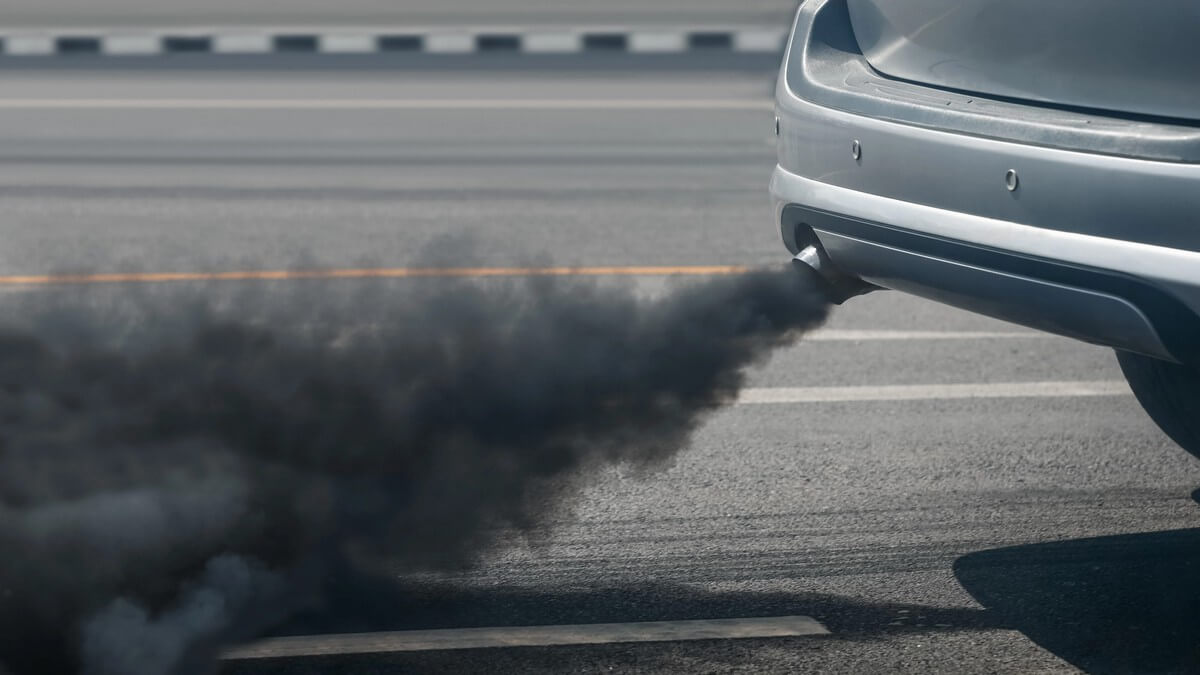

Smoke from the Exhaust
Smoke from the exhaust indicates something is wrong with your car's engine. Depending on the color of the smoke, you can diagnose different problems. Addressing these issues promptly can prevent further damage and costly repairs.
Causes
Several issues can cause smoke from the exhaust. Here are the most common ones:
-
Oil Leaks: If oil leaks into the combustion chamber, it burns along with the fuel, producing blue smoke.
-
Coolant Leaks into the Engine: When coolant leaks into the engine, it can be burned in the combustion process, causing white smoke.
-
Rich Fuel Mixture: A mixture with too much fuel and not enough air can cause black smoke, indicating incomplete combustion.
-
Faulty Fuel Injectors: If the fuel injectors are malfunctioning, they can cause an improper fuel mixture, leading to black smoke.
Symptoms
The color of the smoke from your exhaust can tell you a lot about what's wrong with your car. Here are the typical symptoms:
-
Blue Smoke: Indicates burning oil, which could be due to oil leaks into the combustion chamber.
-
White Smoke: Indicates coolant leakage into the engine, often due to a blown head gasket, a cracked engine block, or a damaged cylinder head.
-
Black Smoke: Indicates a rich fuel mixture, often due to faulty fuel injectors, a clogged air filter, or a malfunctioning fuel pressure regulator.
-
Decreased Engine Performance: Alongside the smoke, you might notice your car running rough, stalling, or losing power.
How to Fix Smoke Coming Out of the Exhaust
If you notice smoke from your exhaust, follow these steps to diagnose and fix the problem:
-
Identify the Color of the Smoke
-
Start by observing the color of the smoke: blue, white, or black.
-
This initial diagnosis will help you pinpoint the cause of the problem.
-
-
Check for Oil Leaks
-
Inspect the engine and the ground under your car for signs of oil leaks.
-
Look for oil around the valve covers, oil pan, and other engine components.
-
If you find a leak, replace the damaged gaskets or seals.
-
-
Inspect the Coolant System for Leaks
-
Check the coolant level in the radiator and the overflow tank.
-
Look for signs of coolant leaks around the radiator, hoses, and engine.
-
If you suspect a blown head gasket, perform a compression test or a coolant pressure test. If the gasket is blown, it needs to be replaced.
-
-
Adjust the Fuel Mixture
-
Check the air filter and replace it if it's dirty or clogged.
-
Inspect the fuel injectors for proper operation. Clean or replace them if necessary.
-
If you suspect a problem with the fuel pressure regulator, test and replace it if needed.
-
-
Conduct a Compression Test
-
A compression test can help identify internal engine problems like worn piston rings or valve seals.
-
Follow the instructions in your repair manual to perform a compression test. If the readings are below the specified range, you may need to repair or replace engine components.
-
Preventing smoke from the exhaust involves regular maintenance and addressing small issues before they become major problems. Regularly check your oil and coolant levels, replace filters as needed, and keep your fuel system clean.
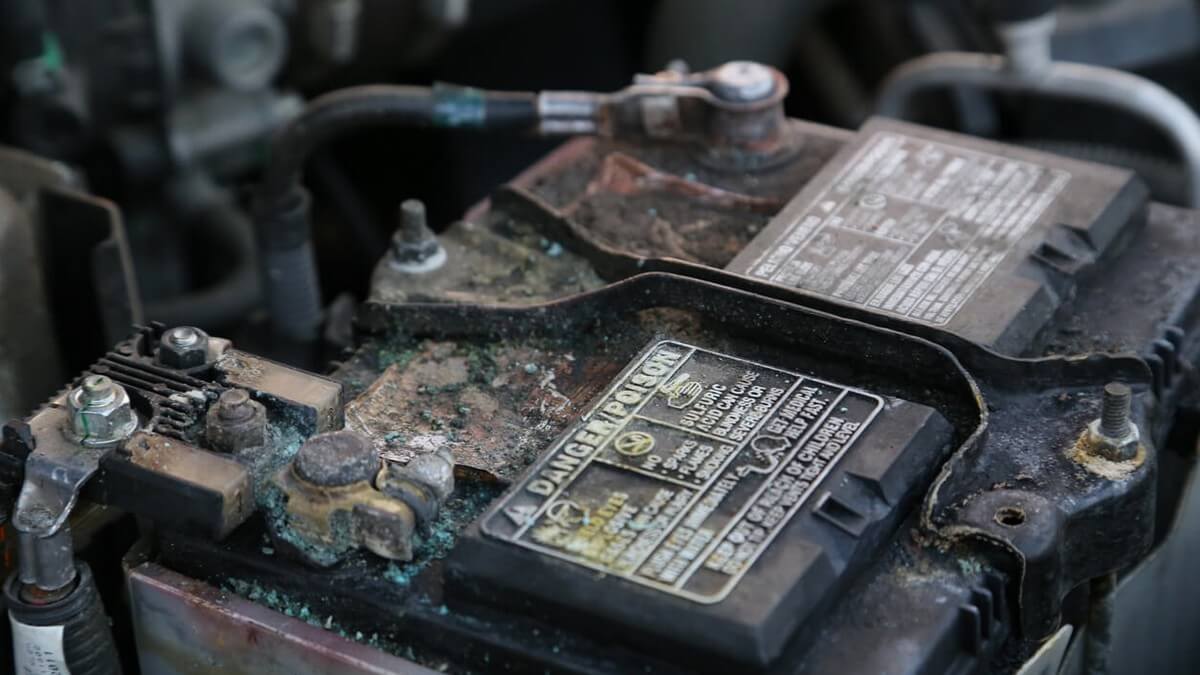

Bad Battery
A bad battery is one of the most common car problems, and it can leave you stranded if not addressed. Your car’s battery is essential for starting the engine and powering electrical components. Understanding the causes and symptoms of a bad battery can help you troubleshoot and fix the issue before it leaves you stuck.
Causes
Several factors can contribute to a bad battery. Here are the most common causes:
-
Old or Corroded Battery: Batteries have a limited lifespan, usually 3-5 years. Corrosion on battery terminals can also prevent proper electrical flow.
-
Loose or Damaged Battery Cables: If the battery cables are loose or damaged, they can’t effectively transmit power.
-
Faulty Alternator: The alternator charges the battery while the car is running. If it’s not working correctly, the battery won’t charge properly.
-
Parasitic Drain: Electrical components that continue to draw power even when the car is off can drain the battery.
Symptoms
Recognizing the symptoms of a bad battery early can prevent inconvenient breakdowns. Look for these signs:
-
Slow Engine Crank: If your engine cranks slowly when you try to start the car, it’s often a sign of a weak battery.
-
Dim Headlights: Dimming headlights when you start the car or when using electrical components can indicate a low battery charge.
-
Electrical Issues: Problems with electrical components such as power windows, radio, and dashboard lights can signal a failing battery.
-
Battery Warning Light on Dashboard: Many cars have a warning light that indicates battery issues. If this light comes on, it’s time to check your battery.
How to Fix a Bad Battery
If you suspect a bad battery, follow these steps to diagnose and fix the problem:
-
Test the Battery Voltage with a Multimeter
-
Set your multimeter to DC voltage and connect the red lead to the positive terminal and the black lead to the negative terminal of the battery.
-
A fully charged battery should read around 12.6 volts. If the reading is below 12 volts, your battery may be weak or discharged.
-
-
Clean the Battery Terminals and Cables
-
Disconnect the battery cables, starting with the negative terminal.
-
Clean the terminals and cable connectors with a wire brush and a mixture of baking soda and water to remove corrosion.
-
Reconnect the cables, starting with the positive terminal, and ensure they are tight.
-
-
Check for Loose or Damaged Battery Cables
-
Inspect the battery cables for any signs of damage, such as fraying or cracking.
-
Ensure the cables are securely connected to the battery terminals. If they are loose, tighten them. If damaged, replace them.
-
-
Replace the Battery if It’s Old or Failing
-
If your battery is more than 3-5 years old or if it fails the voltage test, it’s time to replace it.
-
Remove the old battery by disconnecting the negative cable first, then the positive cable. Lift the battery out of the tray.
-
Place the new battery in the tray and connect the positive cable first, then the negative cable. Ensure the connections are tight.
-
-
Inspect the Alternator and Replace if Necessary
-
Check the alternator belt for wear and tension. A loose or worn belt can prevent the alternator from charging the battery.
-
Test the alternator’s output with a multimeter. With the engine running, the reading should be around 13.5 to 14.5 volts.
-
If the alternator is not charging the battery properly, it may need to be repaired or replaced.
-
-
Check for Parasitic Drains
-
Ensure all electrical components are turned off, and remove the key from the ignition.
-
Disconnect the negative battery cable and connect a multimeter in series between the negative battery terminal and the disconnected cable.
-
If the multimeter shows a significant current draw (typically more than 50 milliamps), you have a parasitic drain. Identify and fix the faulty component.
-
Maintaining a healthy battery is crucial for your car’s reliability. Regularly check your battery’s condition, clean the terminals, and ensure your alternator is working correctly.
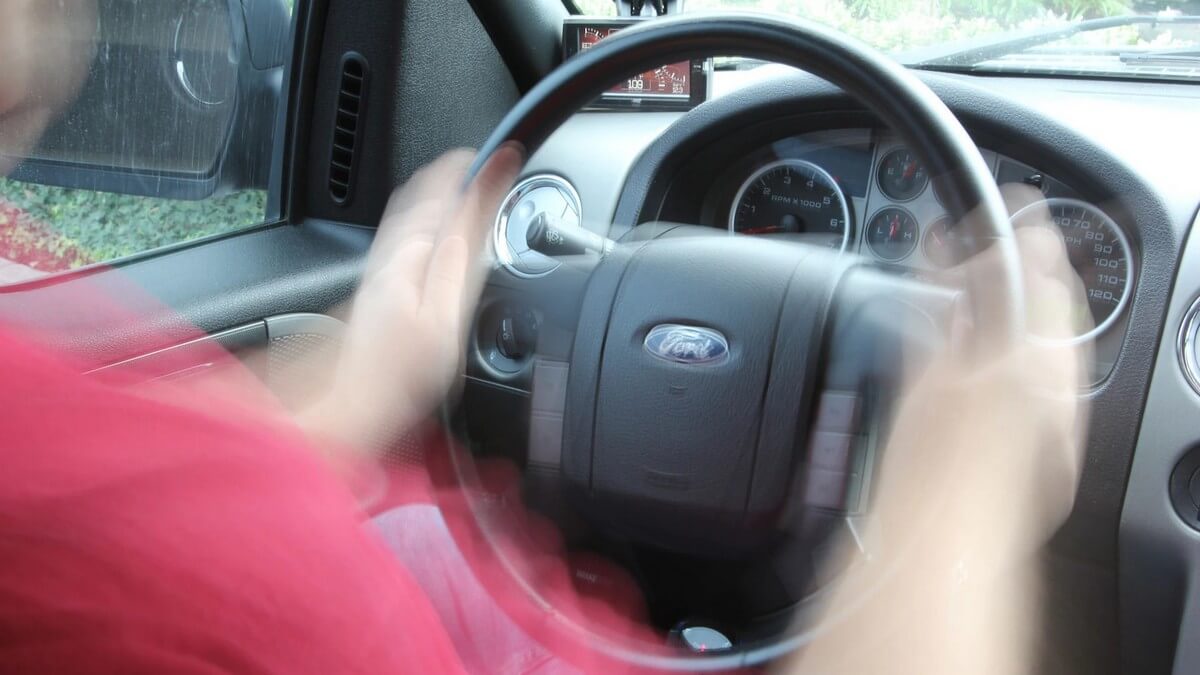

Shaking Steering Wheel
A shaking steering wheel can be unsettling and is often a sign of underlying issues with your car. Addressing this problem promptly is essential to ensure your vehicle's safety and comfort. Understanding the causes and symptoms can help you diagnose and fix the issue effectively.
Causes
Several factors can cause your steering wheel to shake. Here are the most common ones:
-
Unbalanced Tires: Tires that are not balanced correctly can cause vibrations, especially at higher speeds.
-
Worn-Out Suspension Components: Components like tie rods, ball joints, and bushings can wear out over time, leading to a shaking steering wheel.
-
Brake Issues: Warped brake rotors or worn brake pads can cause the steering wheel to shake when you apply the brakes.
-
Misaligned Wheels: Wheels that are not aligned properly can lead to uneven tire wear and vibrations in the steering wheel.
Symptoms
Recognizing the symptoms of a shaking steering wheel can help you pinpoint the problem. Look for these signs:
-
Vibrations While Driving: If you notice vibrations in the steering wheel, especially at certain speeds, it could be due to unbalanced tires or misaligned wheels.
-
Uneven Tire Wear: Inspect your tires for uneven wear patterns. This can indicate alignment issues or worn suspension components.
-
Noise from the Suspension: Listen for clunking or rattling noises from the suspension. This can signal worn out components.
-
Difficulty Steering: If your steering feels loose or unresponsive, it could be due to issues with the suspension or steering components.
How to Fix a Shaking Steering Wheel
If your steering wheel is shaking, follow these steps to diagnose and fix the problem:
-
Check and Balance the Tires
-
Inspect your tires for uneven wear and proper inflation. Underinflated or overinflated tires can cause vibrations.
-
Take your car to a tire shop to have the tires balanced. This involves adding small weights to the wheels to ensure even distribution.
-
-
Inspect and Replace Worn-Out Suspension Components
-
Lift the front of your car using a jack and support it with jack stands.
-
Inspect the tie rods, ball joints, and bushings for wear or damage. Look for cracks, looseness, or excessive play.
-
Replace any worn-out suspension components. This may require specialized tools and can be detailed in your repair manual.
-
-
Check for and Repair Any Brake Issues
-
Remove the wheels and inspect the brake rotors and pads. Look for signs of warping or uneven wear on the rotors and excessive wear on the pads.
-
If the rotors are warped, they may need to be resurfaced or replaced. Worn brake pads should also be replaced.
-
Ensure the brake calipers are functioning correctly and not sticking.
-
-
Get a Professional Wheel Alignment
-
If your tires are unevenly worn or your car pulls to one side, it may be due to misaligned wheels.
-
Take your car to a professional for a wheel alignment. This process adjusts the angles of the wheels to the manufacturer’s specifications to ensure they are set correctly.
-
-
Inspect and Replace Damaged Steering Components
-
Check the steering components, such as the steering rack, power steering pump, and steering column, for damage or wear.
-
If you notice any issues, consult your repair manual for guidance on replacing these components. This can be a complex task, so professional help may be required.
-
Preventing a shaking steering wheel involves regular maintenance and paying attention to early signs of wear. Hence, it’s recommended to regularly check your tire balance, alignment, and the condition of your suspension and steering components.
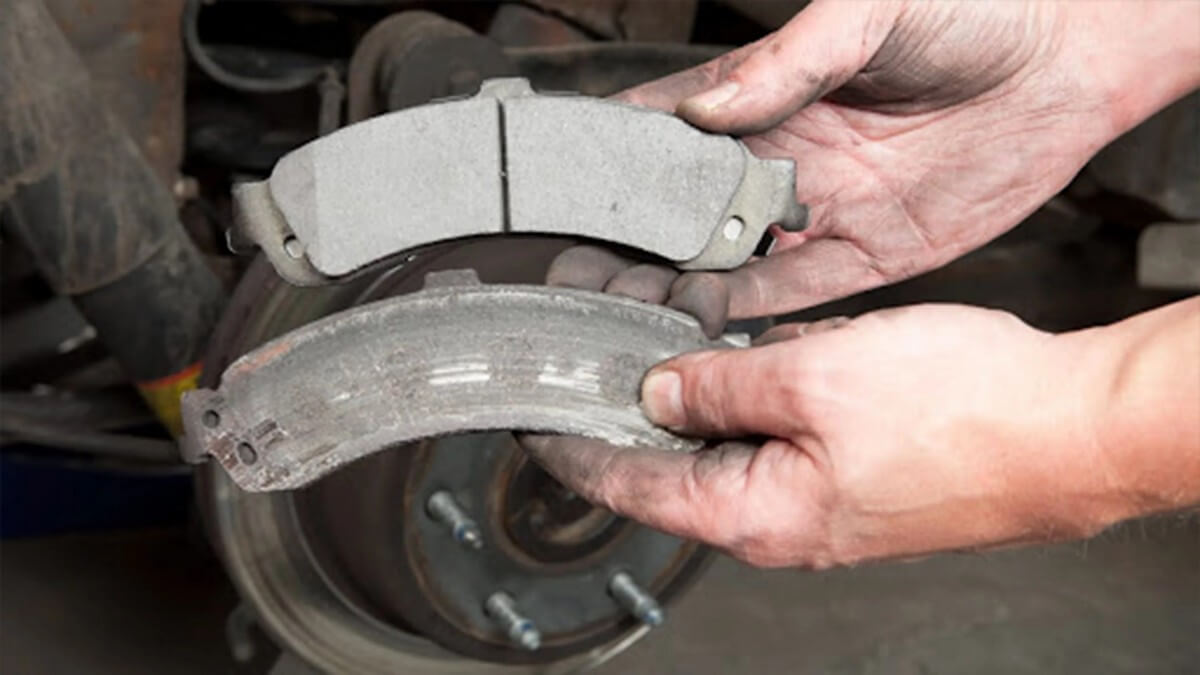

Squeaking or Grinding Brakes
Squeaking or grinding brakes are not only annoying but can also indicate serious issues with your braking system. It's crucial to address these sounds promptly to ensure your safety and prevent further damage. Understanding the causes and symptoms can help you diagnose and fix brake problems effectively.
Causes
Several factors can cause your brakes to squeak or grind. Here are the most common ones:
-
Worn Brake Pads: Brake pads have a metal indicator that creates a squeaking sound when they are worn down and need replacing. If ignored, they can wear down completely, causing a grinding noise as the metal contacts the rotor.
-
Glazed Brake Pads or Rotors: Overheating can cause the brake pads or rotors to glaze, leading to squeaking sounds.
-
Brake Dust Accumulation: Dust and debris can accumulate on the brake components, causing noise when braking.
-
Brake Rotor Damage: Warped or damaged brake rotors can cause grinding sounds and affect braking performance.
Symptoms
Recognizing the symptoms of squeaking or grinding brakes can help you troubleshoot the problem. Look for these signs:
-
Squeaking Noise When Braking: This usually indicates worn brake pads or glazed pads and rotors.
-
Grinding Noise When Braking: This typically means the brake pads are completely worn out, and the metal backing plate is contacting the rotor.
-
Reduced Braking Efficiency: If your car takes longer to stop, it could be due to worn brake pads or damaged rotors.
-
Brake Pedal Vibrations: If you feel vibrations in the brake pedal when braking, it could be due to warped rotors.
-
Vehicle Pulling to One Side While Braking: This can indicate uneven wear on the brake pads or issues with the brake calipers.
How to Fix Squeaking or Grinding Brakes
If your brakes are squeaking or grinding, follow these steps to diagnose and fix the problem:
-
Inspect and Replace Worn Brake Pads
-
Lift the car using a jack and support it with jack stands.
-
Remove the wheels to access the brake calipers and pads.
-
Inspect the brake pads for wear. If the pads are less than 1/4 inch thick, they need replacing.
-
Remove the caliper bolts and slide the caliper off the rotor. Replace the old brake pads with new ones and reassemble the caliper.
-
-
Check for and Replace Any Glazed Brake Pads or Rotors
-
Inspect the brake pads and rotors for glazing, which looks like a shiny, smooth surface.
-
If the pads are glazed, replace them. If the rotors are glazed, they may need resurfacing or replacing.
-
-
Clean Brake Dust Accumulation
-
Remove the wheels to access the brake components.
-
Use a brake cleaner spray to clean the brake pads, rotors, and calipers. Avoid using compressed air as it can spread dust into the air.
-
Reassemble the wheels and test the brakes to ensure the noise is gone.
-
-
Inspect and Replace Damaged Brake Rotors
-
Remove the wheels and inspect the brake rotors for damage or warping.
-
If the rotors are damaged, they will need to be resurfaced or replaced. This involves removing the caliper and rotor from the hub.
-
Install new or resurfaced rotors and reassemble the caliper and wheels.
-
-
Check and Bleed the Brake Fluid if Necessary
-
Check the brake fluid level in the master cylinder reservoir. If it’s low, top it up with the appropriate brake fluid type.
-
If you suspect air in the brake lines, bleed the brakes. This involves opening the bleed screws on the brake calipers and allowing the old fluid and air bubbles to escape while adding new fluid to the reservoir.
-
Follow the specific bleeding procedure for your vehicle, which can be found in the repair manual.
-
Maintaining your brake system is essential for your safety and the performance of your vehicle. So be proactive in regularly checking your brake pads and rotors, cleaning brake dust, and ensuring your brake fluid is at the proper level.
Frequently Asked Questions (FAQs)
Q: What should I do if my car starts overheating while driving?
If your car starts to overheat while you're driving, it's important to act quickly to prevent serious damage to your engine. Here’s what you should do:
-
Turn Off the Air Conditioning: This reduces the load on the engine and can help lower the temperature.
-
Turn On the Heater: It might be uncomfortable, but turning on the heater can help draw heat away from the engine.
-
Pull Over Safely: Find a safe place to pull over and turn off the engine. Allow the engine to cool down for at least 15-30 minutes.
-
Check Coolant Levels: Once the engine is cool, check the coolant level in the radiator and the overflow tank. If it's low, refill with the appropriate coolant type.
-
Look for Leaks: Inspect for any visible coolant leaks. If you find any, it's best to call for roadside assistance or have your car towed to a mechanic.
Q: Is it safe to drive with smoke coming from the exhaust?
No, driving with smoke coming from the exhaust is not safe and indicates a problem that needs immediate attention. The color of the smoke can help diagnose the issue:
-
Blue Smoke: Indicates burning oil, which could mean leaking valve seals or worn piston rings. Driving with this issue can damage the engine.
-
White Smoke: Suggests coolant is leaking into the engine, possibly due to a blown head gasket or cracked engine block. This can lead to severe engine damage and overheating.
-
Black Smoke: Indicates a rich fuel mixture, which means too much fuel and not enough air is being burned. This can affect engine performance and fuel efficiency.
It's best to stop driving and have your car inspected by a professional to avoid further damage.
Q: How often should I check my car battery?
Regularly inspecting your car battery is crucial for its longevity and reliability. Here’s a good maintenance schedule:
-
Every Six Months: Check the battery's overall condition, including terminals and cables, for corrosion or damage.
-
Before Long Trips: Inspect the battery to ensure it's in good condition and fully charged.
-
If You Notice Symptoms: If you experience slow cranking, dim lights, or other electrical issues, check the battery immediately.
Additionally, keep your battery clean and ensure it’s securely mounted. Regular maintenance can help you avoid unexpected battery failures.
Q: What can cause my steering wheel to shake only at high speeds?
A steering wheel that shakes only at high speeds typically indicates issues with the tires or wheels. Here are common causes:
-
Unbalanced Tires: Tires that are not balanced can cause vibrations at higher speeds. This is often resolved by having your tires balanced at a tire shop.
-
Misaligned Wheels: Wheel alignment issues can cause uneven tire wear and vibrations. A professional alignment can correct this.
-
Tire Issues: Inspect for any tire damage, such as bulges or uneven wear. Replacing damaged tires can eliminate the shaking.
-
Worn Suspension Components: Components like tie rods, ball joints, or bushings can wear out, causing vibrations. Have these inspected and replaced if necessary.
Addressing these issues promptly can ensure a smoother, safer ride.
Q: Why do my brakes squeak when I stop?
Squeaking brakes can be caused by several factors, and it's important to identify and address the issue:
-
Worn Brake Pads: When brake pads wear down, they have a metal indicator that creates a squeaking sound to alert you it's time for replacement.
-
Glazed Brake Pads or Rotors: Overheating can cause the brake pads or rotors to glaze, leading to squeaking noises. Replacing or resurfacing them can solve the problem.
-
Brake Dust Accumulation: Dust and debris can accumulate on the brake components, causing noise. Cleaning the brakes can eliminate this.
-
Lack of Lubrication: The contact points where the brake pad meets the caliper can squeak if not properly lubricated. Applying brake grease to these areas can help.
If your brakes continue to squeak after these checks, it’s best to have them inspected by a professional to ensure your braking system is in good working order.
Last Words
Taking care of your car doesn't have to be a daunting task. With a little bit of knowledge and some basic tools, you can tackle many common car problems on your own. Not only will you save money on repairs, but you'll also gain a deeper understanding of how your vehicle works, empowering you to keep it in peak condition.
So, next time your car throws a curveball, don't sweat it. Dive in, get your hands dirty, and drive away with the satisfaction of a job well done. Safe travels and happy wrenching!
